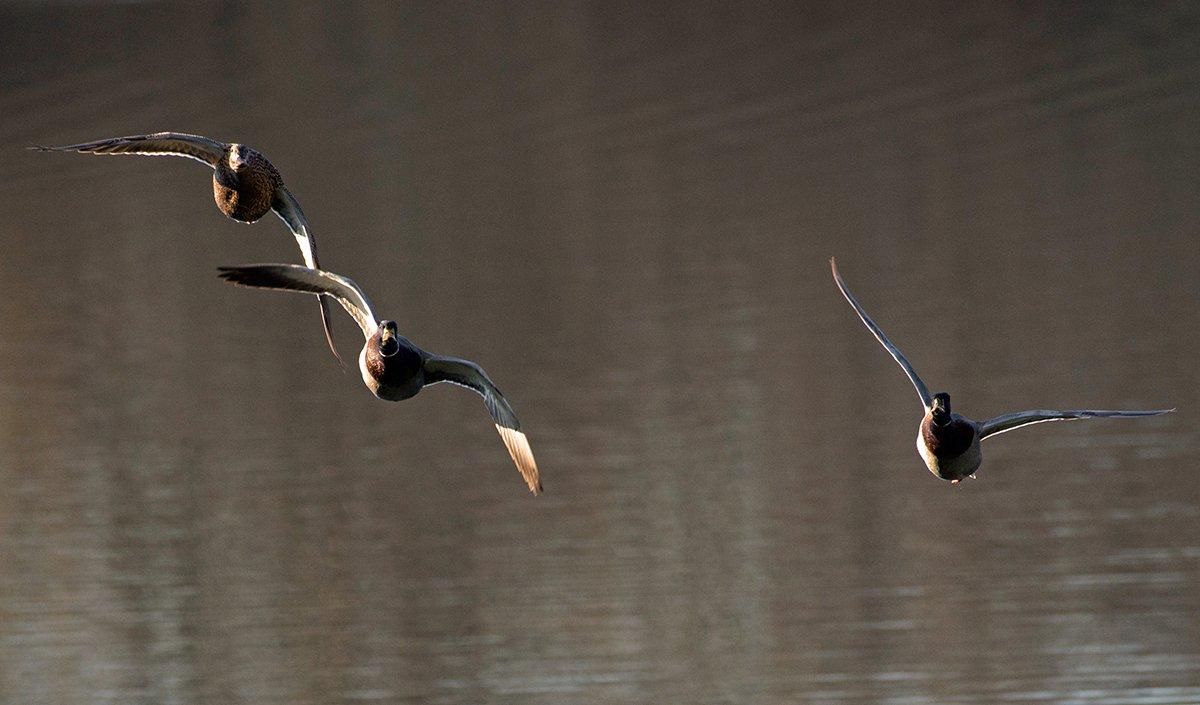Some common duck and goose beliefs pale when examined closely
Many media outlets test the veracity of statements from politicians, using virtual truth-o-meters to assess whether elected officials are accurate, fibbing a bit or downright lying.
During one slow day in the duck blind, I wondered how a truth-o-meter might shed light on some of waterfowl hunting's commonly held principles. After all, conventional wisdom often fades when exposed to real-world experience.
So, I recently acquired a truth-o-meter. (Ssh! Fox News doesn't know it's missing yet.) Then, I ran several popular duck and goose hunting axioms through it and graded them. Here are the results.
Common Belief: You Can Distinguish Drake Mallards From Hens in Flight by Their Chestnut-Brown Upper Breasts
Truth-o-meter grade: sometimes true. This long-held belief, commonly espoused by Northern hunters looking at mostly brown birds, can help you pick out young or eclipse drakes from drab hens. However, it's tougher to see those darker upper breasts during low light or cloudy days. Further, some hens also have distinctly darker upper breasts and can fool you when looking at a decoying silhouette. I look for chestnut breasts on decoying mallards but try to confirm my suspicions by seeking green heads, white neck rings, gray bellies or other traits that indicate drakes.
Ducks Land Into the Wind
Usually true. As with aircraft, most birds find an aerodynamic advantage by taking off and landing into a good breeze. However, as I've mentioned in this blog, that behavior fades in light winds — say less than 5 or 6 mph. Then, ducks pretty much land in any direction they please, so you'd better make sure to have the sun at your back for a tactical advantage. And sometimes, even when facing stiff winds, ducks surprise you by slipping in from the side or behind you and landing with the wind. Why? Who knows? But it happens now and then, especially with teal, buffleheads or other small birds.
North Winds are Best
Sometimes true. Yes, north winds usually accompany changing conditions and weather fronts that move ducks and bring in fresh birds. But when hunting, wind direction only helps or hurts you depending on your setup. If you're sitting on a south-facing point with a howling northwester at your back, you'll likely shoot some ducks. Hunt the southern shore of that slough, however, and you'll curse the gale.
East Winds are Bad
Generally false. Again, if you're open-water hunting the eastern shoreline of a large lake with a good easterly breeze behind you, chances are you'll have a boat filled with bluebills by day's end. If you're across the pond, you might consider going grouse hunting. The wind is only bad if you're in the wrong spot.
Cloudy Days are Best
Generally false. I don't know where people got this idea. Cloudy days can be good when the barometer plummets and the wind howls, but typically, sun provides three advantages. First, when you set up with the sun at your back, sunlight obscures the vision of approaching birds, making concealment much easier. During cloudy days, birds seem to pick out boats, blinds and hunters much quicker. Second, sunlight makes your decoys much more visible, especially when hunting diving ducks on big water. Third, sun lets you better identify birds at long distances (remember that chestnut breast?).
Geese Won't Land in Holes
False. This is one of my favorites. Yes, if everything's equal, geese often want to land at a high spot in a field, so those areas make good setups. But if they've chowed down all the waste grain at that high spot, there's no reason for them to land there and walk to the food.
This was hammered home years ago during Wisconsin's early goose opener. Three friends and I had scouted a wheat field for weeks, preparing for what promised to be an epic hunt. Our setup, we agreed, should be the highest point of the undulating field, almost at its midpoint. When dawn broke on the opener, a huge flock of honkers descended on us, circled once and then landed in the deepest hole in the county, which was next to a small woodlot. We changed positions, but we'd already outsmarted ourselves, and our shoot of a lifetime netted three birds.
Waterfowl Writers are Oracles and Always Know Best
Ahem. Well, the truth-o-meter is running low on power, folks, so we'll have to skip this one. Please just continue to assume that this statement is true. Seriously, please. I'd like to keep writing these Duck Blogs.
Click here for more Realtree waterfowl hunting content. And check us out on Facebook.







